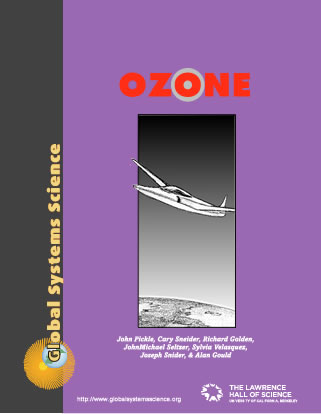OZ6C. Stay Current—The Loss of ’84 and the Surprise of ’85

Staying current for Chapter 6
{ Ozone Contents }
2019-01-22. Podcast: Uncovering the Ozone Hole. By Nanci Bompey, Eos/AGU.
2012-Dec. The Ozone Problem is Back – And Worse Than Ever | Sharon Begley, Smithsonian Magazine. Excerpt: Jim Anderson of Harvard University … Since 2001, …had been studying powerful thunderstorms by packing instruments into repurposed spy planes and B-57 bombers…. To his puzzlement, the instruments detected surprisingly high concentrations of water molecules in the stratosphere, the usually drier-than-dust uppermost layer of the atmosphere. They found the water over thunderstorms above Florida, and they found it over thunderstorms in Oklahoma—water as out of place as a dolphin in the Sahara. While water in the stratosphere might seem innocuous, the finding made Anderson “profoundly worried,” …Anderson knew that water could, through a series of chemical reactions, destroy ozone. … by early 2012 … he showed that summer thunderstorms were indeed injecting water molecules into the stratosphere. …Oh, and one more thing: The violent storms that inject water vapor into the stratosphere might be getting more powerful and more frequent under the influence of global warming. Anderson had made a revolutionary connection between climate change and ozone loss. For three decades, scientists have shouted themselves hoarse insisting the two planetary threats were separate and unrelated. “What Anderson did is piece together all of the complicated parts—how you can inject water in higher and higher amounts into the upper atmosphere and how that causes ozone destruction—and come up with this alarming possibility,” says atmospheric scientist Ralph Cicerone, president of the National Academy of Sciences…. And if Anderson is right and the ozone layer is under renewed attack, then all of the potential consequences of that threat are back like a bad dream from the 1980s: more ultraviolet light reaching the ground; more cases of skin cancer and cataracts; damage to plankton and other organisms that support ocean life; and withered crops that could lead to skyrocketing food prices. …strong thunderstorms—those about 30 miles across—create powerful updrafts, essentially gaseous elevators that carry warm, humid air miles into the atmosphere. … if a storm is strong enough, the updraft can blast through the boundary between the lower atmosphere and the stratosphere, reaching the latter and spreading 60 miles or more in all directions and remaining there for days. The concentration of water in the stratosphere more than triples. … ozone is depleted 100 times faster in an area affected by thunderstorms than in an area that is not. … All told, 25 to 30 percent of the ozone over a 60- by 60-mile area could be destroyed, with the effect persisting for weeks…. Read the full article: http://www.smithsonianmag.com/science-nature/The-Ozone-Problem-is-Back–And-Worse-Than-Ever-180011891.html
23 September 2003. RELEASE: 03-306. 2003 Ozone ‘Hole’ Approaches, But Falls Short Of Record. This year’s Antarctic ozone hole is the second largest ever observed, according to scientists from NASA, the National Oceanic and Atmospheric Administration (NOAA), and the Naval Research Laboratory.
17 April 2001. WET UPPER ATMOSPHERE MAY SLOW OZONE RECOVERY. Increasing water vapor in the stratosphere, which results partially from greenhouse gases, may delay ozone recovery and increase the rate of climate change. The new study by NASA scientists in Geophysical Research Letters is the first to link greenhouse gases to increased ozone depletion over populated areas.

